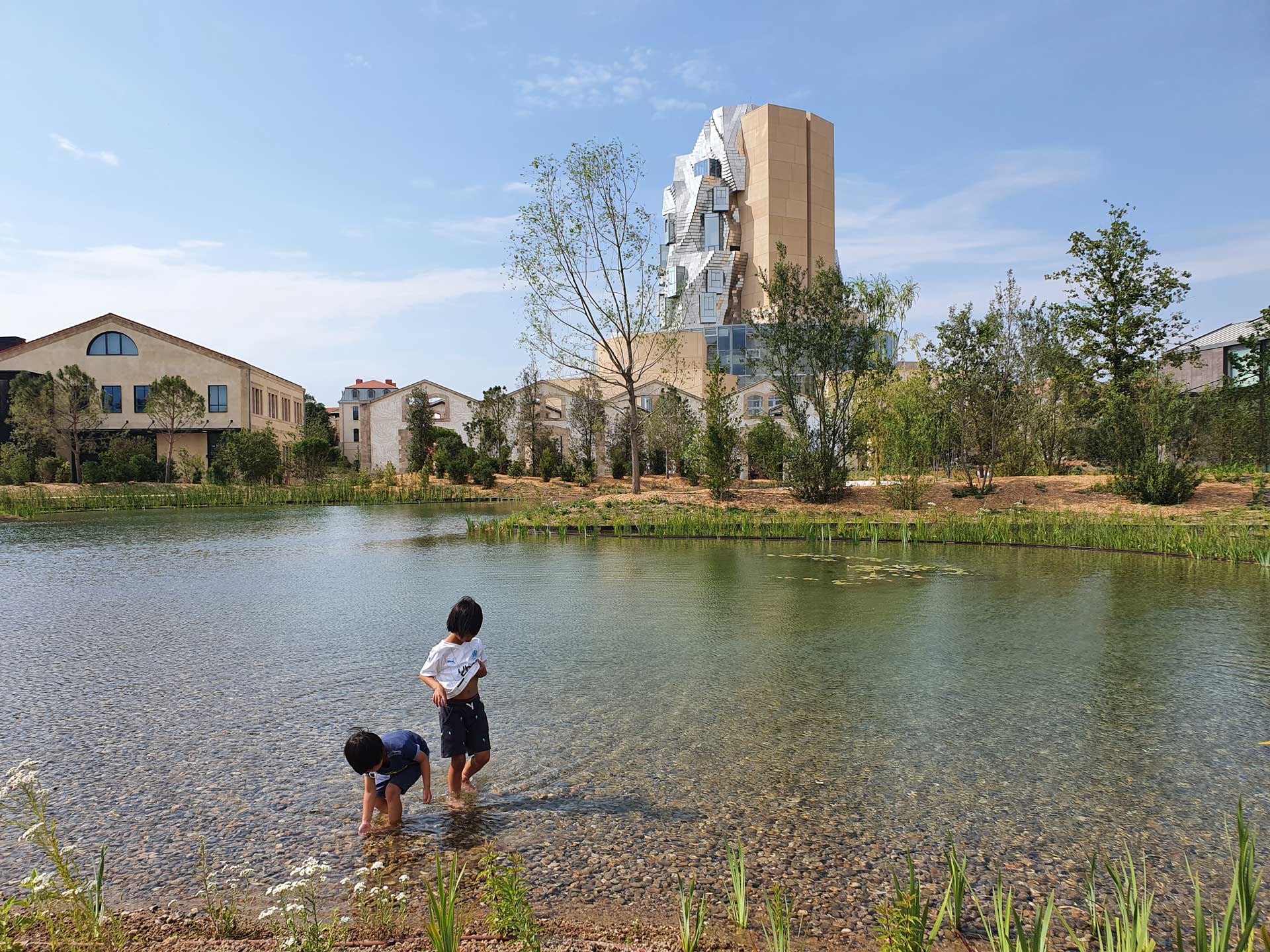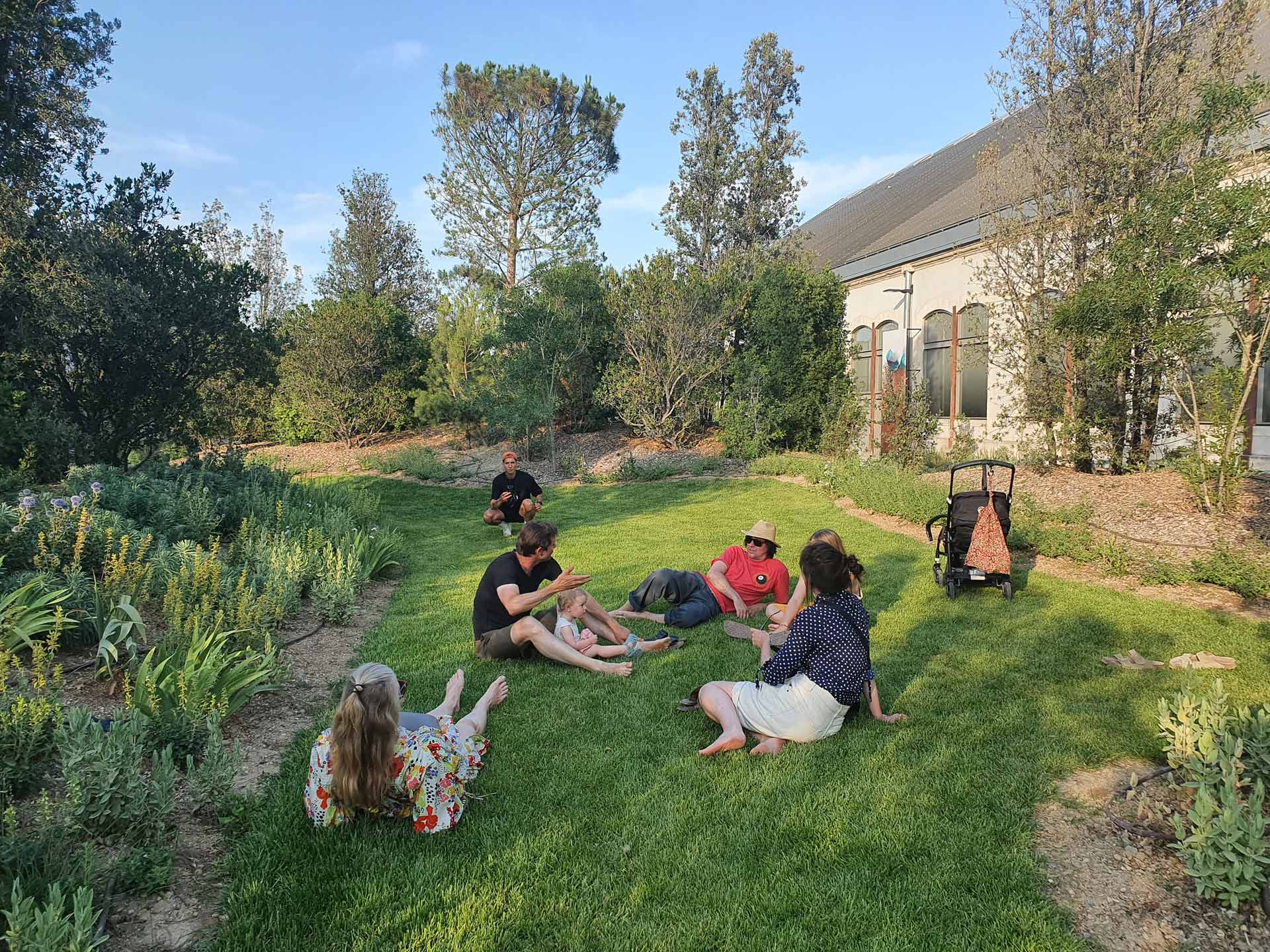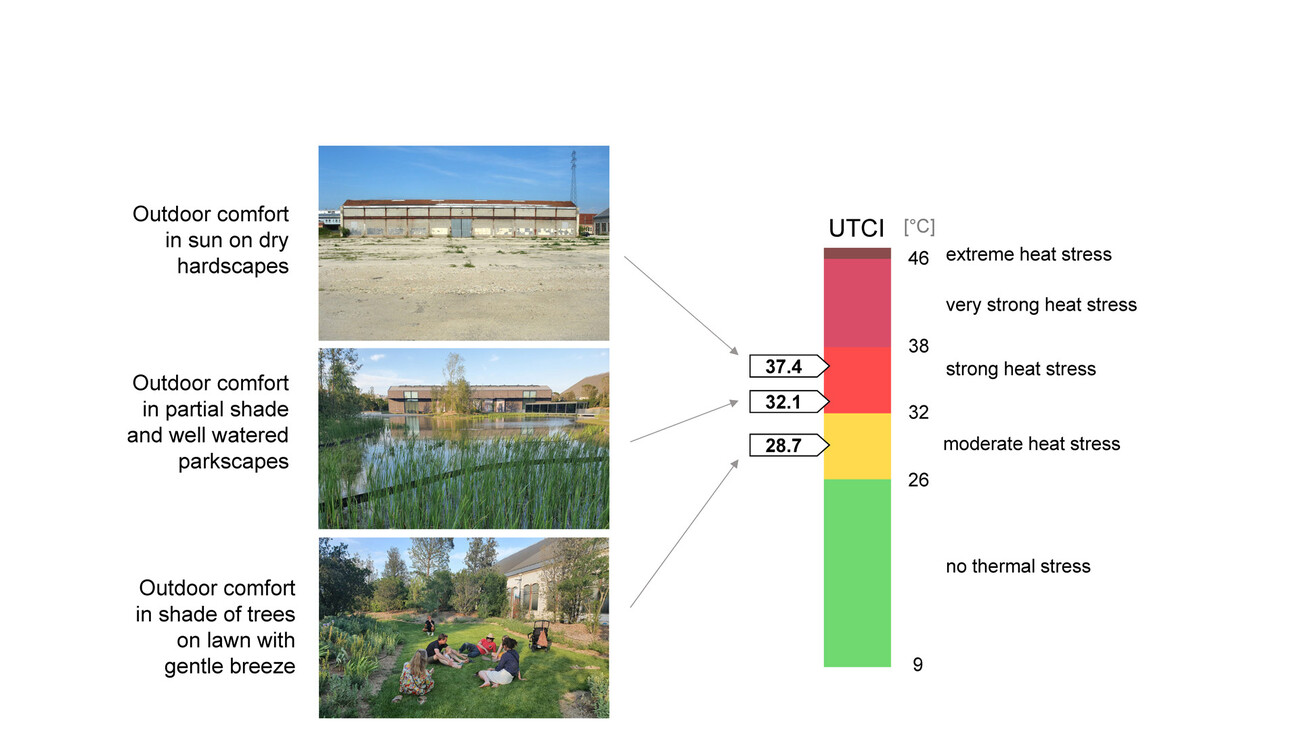LUMA Parc des Ateliers: The Landscaped Park, Arles, France

Built in the 19th century, the Parc des Ateliers was originally an industrial site for the repair and construction of locomotives. Today, it hosts the activities of LUMA Arles with a contemporary art and research center located south of Arles’ historic city center. The project repurposes the industrial ruins of a 16-acre rail depot and revolves around a public park-garden designed by landscape architect Bas Smets and a new arts resource building designed by Frank O. Gehry. Two structures originally built as the repair shops for SNCF railcars, the Mécanique Générale and Les Forges, have been renovated by Selldorf Architects. The Parc des Ateliers is an outstanding project in regard to both the architectural approach and energy efficiency and sustainability.
The former industrial site consisted of a large concrete platform without any vegetation, resulting in arid climatic conditions. The landscape project was to transform it into a lush park. The 10-acre (4 ha) park features 500 new trees and a large pond. Trees, shrubs, grasses, and ground covers were introduced to the topography, creating a new landscape on the site. All species are native to the Mediterranean region.
The growth of vegetation is made possible by a permanent water-bearing system that draws its water supply from the Canal de Craponne, created in the XVIᵉ century between the Durance and Rhône rivers to promote agriculture and is located close to the park. The large pond serves both as a reservoir of water for irrigation and for cooling on hot summer days. The pond, together with the new topography and its vegetation, creates a microclimate, effectively transforming the concrete desert into a lush public park.
Transsolar supported the design with advanced human bio meteorological modeling of outdoor comfort strategies. Exploring strategies of green and blue infrastructure and the combined performance of a well-watered vegetation, shade and wind times with excellent outdoor comfort could be significantly increased throughout the year.



